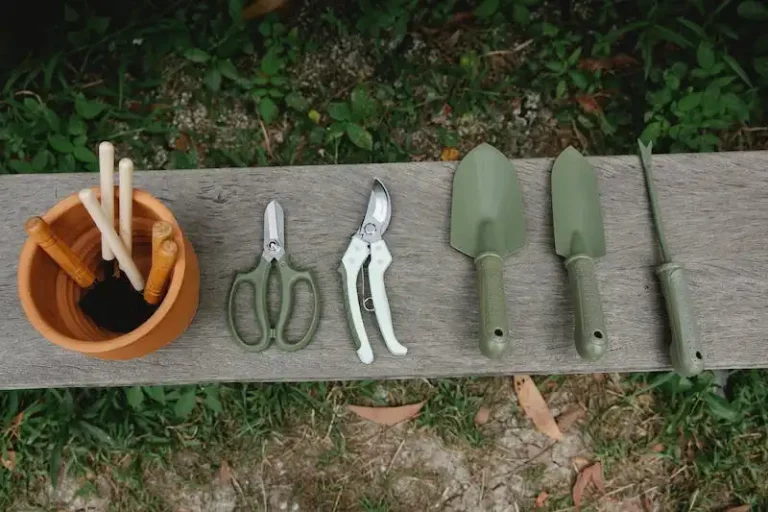Radishes are a popular vegetable that grow well in a variety of conditions. They are known for their quick growing time and their small size, which makes them perfect for planting in smaller gardens or containers. Radishes can be planted in the ground or in containers, and there are many different varieties to choose from, each with their own unique taste and appearance.
When growing radishes, it is important to choose a well-drained soil that receives plenty of sunlight. Radishes can be grown in a wide range of soils, but they prefer a sandy loam with a pH between 6.0 and 7.0. If your soil is heavy clay or has poor drainage, you may need to amend it with organic matter to improve its structure.
Radishes should be planted in rows with a spacing of 2 to 4 inches between each seed. The seeds should be planted about 1/2 inch deep, and you should aim for a uniform spacing between each seed for even growth. Radishes are quick to germinate, typically taking between 3 and 10 days to sprout. Once the seeds have sprouted, you should water them thoroughly to ensure they are well hydrated.
Radishes should be harvested when they reach the desired size, which can vary depending on the variety. Most radishes are ready for harvest within 21 to 30 days of planting. To harvest radishes, gently pull them from the ground, making sure to remove any excess soil. If you plan on storing your radishes, be sure to wash them thoroughly, removing any dirt or debris, and then store them in a cool, dark place.
How to Grow Radishes in Your Home Garden
If you are looking for an easy and fast-growing crop to add to your home garden, radishes are a great choice. They can be grown in a variety of climates and are ready to harvest in just a few weeks. In this step-by-step guide, we will show you how to grow radishes from seed to harvest.
1. Soil Preparation: Radishes prefer well-drained, loose soil with good fertility. Before planting, remove any rocks or debris and loosen the soil to a depth of about 6 inches. If your soil is heavy or clay-rich, consider adding organic matter to improve drainage and nutrition.
2. Planting: Radish seeds should be planted about half an inch deep, spacing them 1 inch apart in rows. Sow the seeds directly in the garden bed, as radishes do not transplant well.
3. Watering: Radishes require consistent moisture to promote fast and uniform growth. Keep the soil evenly moist, but not waterlogged, throughout the growing season. Irrigate deeply once or twice a week, depending on rainfall and temperature.
4. Lighting Requirements: Radishes prefer full sun for best growth and flavor. They can tolerate some shade but may grow slower and produce smaller root bulbs.
5. Thin the Seedlings: Once the radish seedlings reach about 2 inches in height, thin them out to about 2-3 inches apart. This will allow enough space for the radishes to develop fully and prevent overcrowding.
6. Fertilization: Radishes are a quick-growing crop and do not require much fertilization. However, if your soil is deficient in nutrients, you can apply a balanced fertilizer once or twice during the growing season. Avoid excessive nitrogen, as it may cause the radishes to produce more foliage and less roots.
7. Weed Control: Keep the garden bed free from weeds, as they can compete with radishes for nutrients, water, and light. Regularly remove weeds by hand or cultivate the soil surface to prevent weed growth.
8. Harvesting: Radishes can be harvested when they have reached their mature size, usually between 20 to 30 days after planting. Gently pull the radishes out of the soil by grasping the above-ground portion of the plant. If the radishes are left in the ground for too long, they may become tough and woody.
With this step-by-step guide, you now know how to grow radishes in your home garden. Enjoy the delicious and nutritious rewards of your own radish crop!
Radish Varieties
When it comes to radishes, there are many different types to choose from. Whether you want a small, round radish or a long, daikon radish, there’s a variety for you!
One popular variety is the “Cherry Belle” radish. These radishes are small and round, with a bright red skin and a crisp, white flesh. They’re ready to harvest in just 20 to 30 days, making them a favorite of gardeners who want a quick and easy crop.
If you like a spicier radish, try the “French Breakfast” variety. These radishes have an oblong shape and a mild heat. They’re often enjoyed with breakfast or as a snack with cheese. French Breakfast radishes are usually ready to harvest in about 25 to 30 days.
For gardeners with a bit more patience, the “Watermelon” radish is a unique choice. These radishes have a light green rind and a pink interior, resembling a mini watermelon. They take longer to mature, usually around 60 days, but many gardeners find them worth the wait.
If you’re looking for radishes that can be stored for later use, the “Black Spanish” radish is a good option. These radishes have a black skin and a spicy flavor. They can be harvested in about 50 to 60 days and will keep well when stored in a cool, dark place.
No matter what variety you choose, radishes are relatively easy to grow. They can be planted directly from seed and don’t require much care. Just make sure to plant them in well-draining soil that is rich in organic matter, and water them frequently. Radishes prefer cool weather, so it’s best to plant them in early spring or late summer.
Radishes need about 1 inch of water per week, either from rainfall or irrigation. If the soil is very dry, you may need to water more frequently. Just be careful not to overwater, as this can cause the radishes to split.
To plant radishes, simply dig a hole about 1/2 inch deep and place the radish seed in the hole. Cover it with soil and firm it down gently. Radish seeds should be planted about 2 inches apart in rows that are 12 to 18 inches apart.
Radishes germinate quickly and will often sprout within a week. Once the seedlings are about 2 inches tall, thin them out so that each radish has about 2 inches of space around it. This will give the radishes room to grow and produce nice, round bulbs.
One important thing to note is that radishes don’t like hot weather. If the temperature rises above 75°F (24°C), radishes may become tough, woody, or develop seedpods. If you’re growing radishes in a warm climate, try planting them in partial shade or provide some overhead shade to help keep them cool.
Radishes can also be grown in containers or raised beds, making them a great option for gardeners with limited space. Just make sure the container or bed has good drainage and is at least 6 inches deep.
When it comes to pests, radishes are usually not bothered by many insects. Occasionally, you may encounter pests like aphids or flea beetles, but these can usually be controlled with insecticidal soap or by attracting beneficial insects to your garden.
In conclusion, radishes are a versatile and flavorful vegetable that can be enjoyed in many different ways. With a wide variety of types to choose from, you’re sure to find one that suits your taste. Whether you want them for their early production or their unique appearance, radishes are a great addition to any garden.
How to Grow Radishes
Radishes are a versatile and easy-to-grow vegetable that can be enjoyed in salads, sandwiches, and even pickled. If you want to grow your own radishes, follow these step-by-step instructions to ensure a successful crop.
1. Seedling Preparation
Start by reading the seed packet for information on when to start seedlings. Radish seedlings have two cotyledons, so wait until you see the second set of leaves before transplanting them outdoors.
2. Indoor Starting
If you want to get a head start on your radish garden, you can start seeds indoors. Plant the seeds in seedpods or small pots filled with seed-starting mix. Keep them indoors in a warm and sunny location until they are ready to be transplanted outdoors.
3. Outdoor Planting
Prepare the soil by removing any weeds or other vegetation from the area where you plan to plant. Radishes grow best in loose, well-draining soil with plenty of organic matter. Use a garden fork to work the soil to a depth of at least 6 inches and remove any rocks or other debris.
4. Seed Sowing
Sow radish seeds directly into the prepared soil, following the instructions on the seed packet for proper spacing and depth. For most varieties, plant the seeds about 1/2 inch deep and 1 inch apart in rows spaced 12 inches apart.
5. Weed Control
To ensure your radishes have enough space and nutrition to grow, it’s important to keep the area weed-free. Remove any weeds that appear and carefully hand-pull any that pop up between plants. Mulching can also help suppress weed growth and conserve soil moisture.
6. Care and Maintenance
Radishes are easy to care for once they are established. Water them regularly throughout their growing season, especially during dry periods. Provide them with at least 1 inch of water per week. If you have any questions about radish care, check with your local extension office or Google for more information.
7. Harvesting
Radishes typically mature within 20 to 60 days, depending on the variety. To determine if radishes are ready for harvest, gently pull one from the ground and check its size. If it is the desired size and shape, harvest the rest of the crop. Radishes that stay in the ground too long may become woody or develop a strong flavor.
FAQs
| Q: How deep should I sow radish seeds? | A: Sow radish seeds about 1/2 inch deep. |
| Q: How far apart should I sow radish seeds? | A: Sow radish seeds about 1 inch apart. |
| Q: How long does it take for radishes to mature? | A: Radishes can mature in as little as 20 days, depending on the variety. |
| Q: What types of radishes can I grow? | A: There are many different types of radishes to choose from, such as round radishes, long radishes, and even Daikon radishes. |
| Q: Are there any common problems or diseases that affect radishes? | A: Radishes are generally free from major diseases and pests. However, some problems that can arise include leaf spots, root maggots, and fungal diseases. Good crop rotation and proper care can help prevent these issues. |
Following these steps will help you grow healthy and productive radishes in your garden. Enjoy the crisp texture and peppery flavor of homegrown radishes in your meals!

